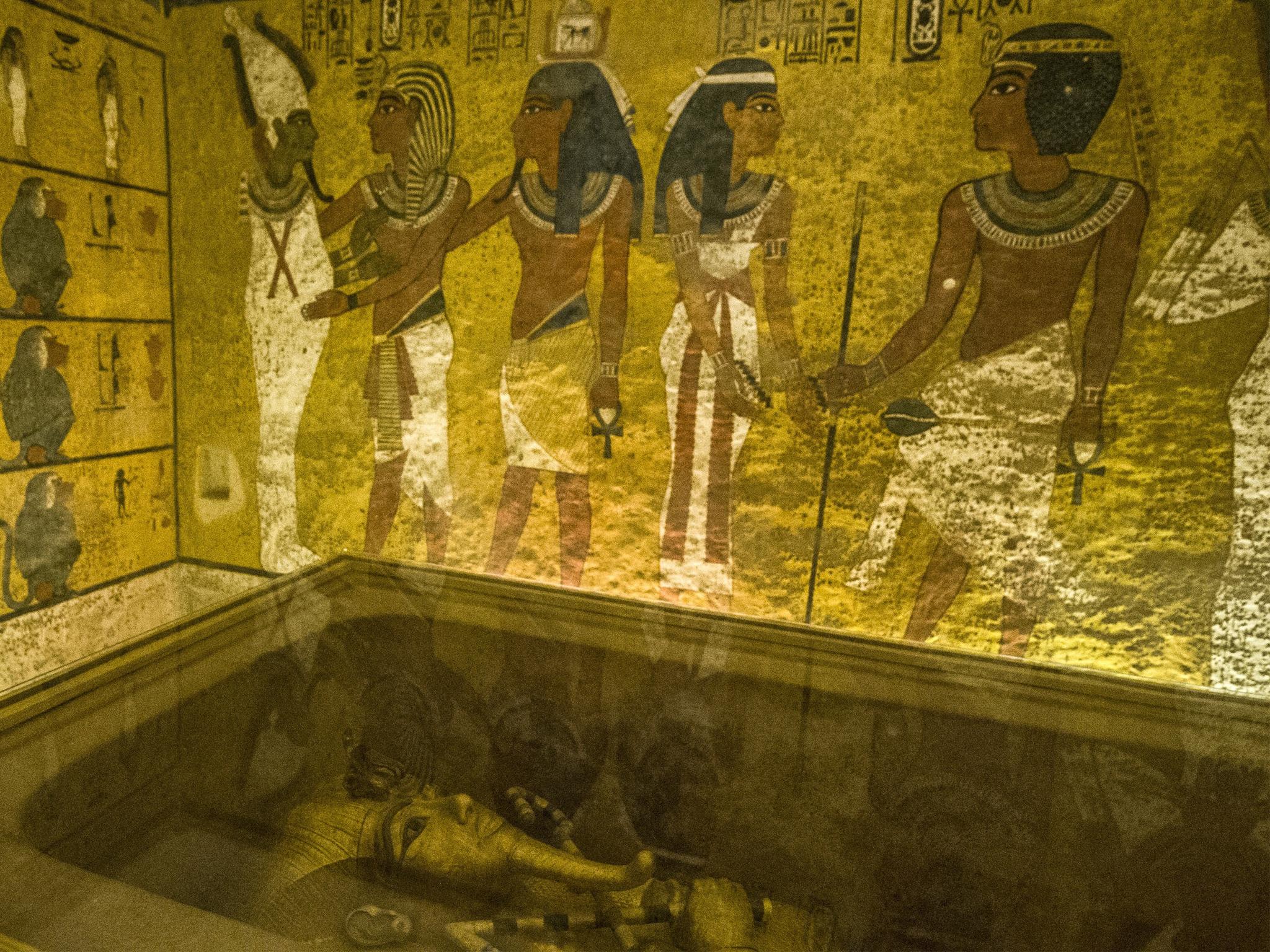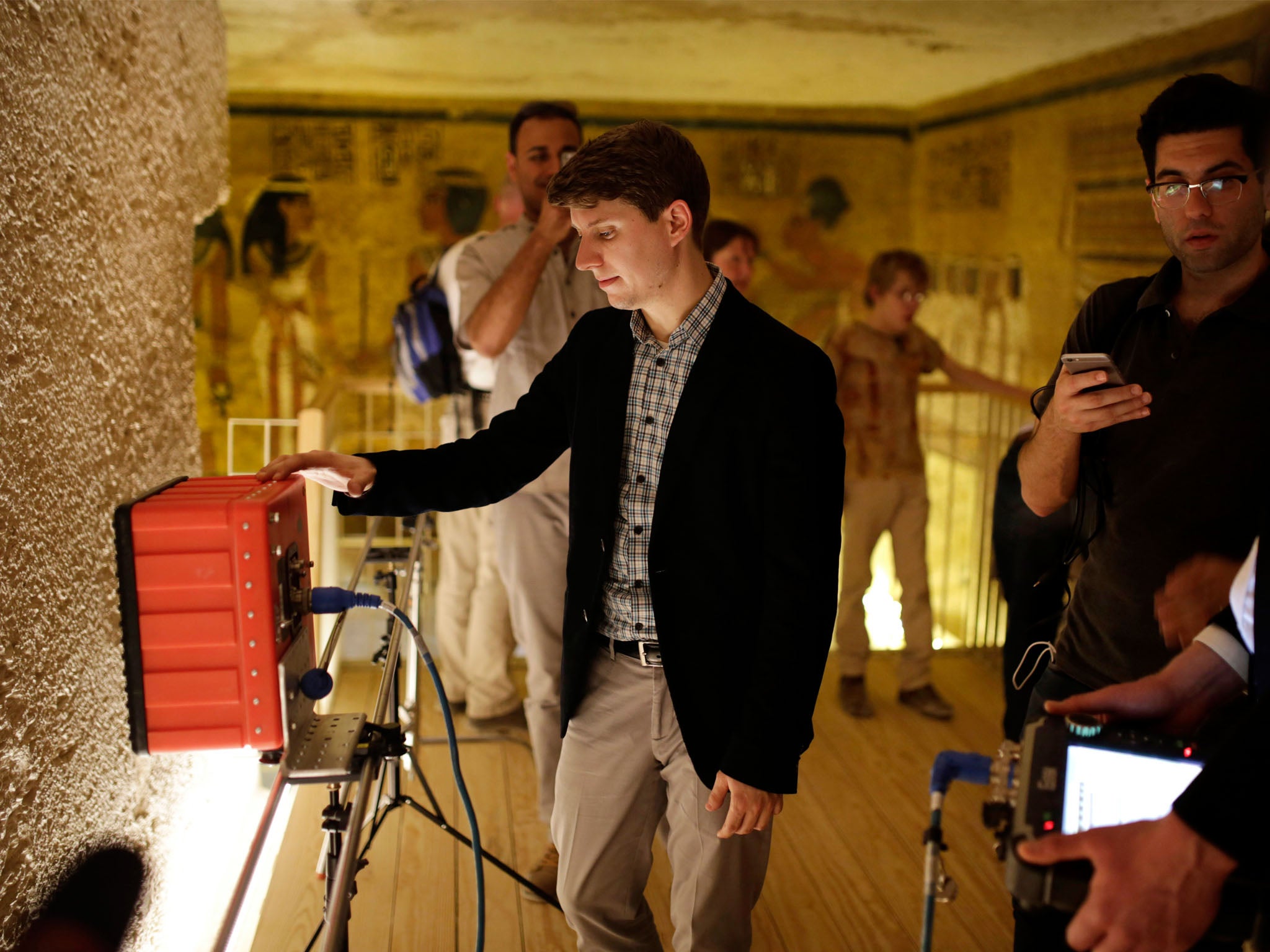Tutankhamun 'secret burial chamber' does not exist, researchers find
Archaeologists were hoping to find final resting place of Queen Nefertiti

Radar scans of King Tutankhamun's tomb have proved there are no secret chambers packed with buried treasure.
The disappointing end to a three-year search for the hidden rooms was announced by the Egyptian Antiquities Ministry.
It scotches the theory proposed by British Egyptologist Nicholas Reeves that Queen Nefertiti's tomb could be concealed behind wall paintings in the pharaoh's burial chamber.
Experts had been divided over the existence of the hidden rooms after scans by American and Japanese scientists proved inconclusive.
A team from the Polytechnic University of Turin started a new search in February 2017 using ground penetrating radar.
"Our work shows in a conclusive manner that there are no hidden chambers, no corridors adjacent to Tutankhamun's tomb," said Francesco Porcelli, presenting the findings at an international conference in Cairo.
"As you know there was a theory that argued the possible existence of these chambers but unfortunately our work is not supporting this theory."
Egyptian officials had claimed in 2015 that there was a "90 percent" chance that something was behind the walls of Tutankhamen's tomb.

It had been hoped the discovery of the final resting place of Queen Nefertiti would shed new light on a mysterious period of Egyptian history.
Nefertiti, who died in the 14th century BCE, is thought to have been Tutankhamun's stepmother.
Her face was immortalised in a 3,300-year-old bust now in a Berlin museum but her mummy has never been formally identified.
The search for the famous queen will now have to focus elsewhere.
Mostafa Waziri, secretary-general of the Supreme Council of Antiquities, confirmed the search did not reveal any man-made blocking walls or corridors as earlier suspected.
"The studies have shown that no chambers exist, or even an indication of any threshold or door frames, which contradicts the previous theory that had assumed the existence of passages or chambers adjacent or inside the burial chamber of King Tutankhamun."
King Tutankhamun's treasures are currently being transferred to a new museum near the Giza Pyramids outside Cairo.
On Saturday the pharaoh's sixth and final chariot, made from Lebanese cedar wood and animal skin, was moved to the under-construction site.
The first phase of the project will be completed by the end of this year but the grand opening is not scheduled to take place until 2022, the 100th anniversary of the discovery of King Tut's tomb by the British archaeologist Howard Carter.
Additional reporting by agencies
Join our commenting forum
Join thought-provoking conversations, follow other Independent readers and see their replies
Comments
Bookmark popover
Removed from bookmarks